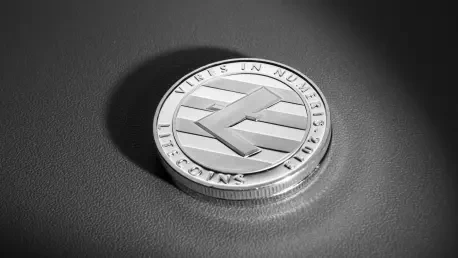In a world where financial systems are constantly evolving, a groundbreaking innovation known as real-world asset (RWA) tokenization is capturing the attention of investors, institutions, and technologists alike. This transformative process, powered by blockchain technology, converts ownership rights of tangible and intangible assets—ranging from real estate and fine art to government bonds and intellectual property—into digital tokens. These tokens, representing fractional shares of high-value items, are poised to redefine how assets are bought, sold, and managed on a global scale. By bridging the gap between traditional finance (TradFi) and decentralized finance (DeFi), RWA tokenization promises to unlock unprecedented opportunities, making once-inaccessible investments available to a wider audience. The potential to reshape financial markets is immense, with implications for liquidity, efficiency, and inclusivity that could alter the very foundation of global economics.
As this technology gains momentum, market projections paint a staggering picture of growth, estimating the tokenized asset market could reach between $16.1 trillion and $30 trillion by 2030. Yet, amidst the excitement, significant challenges loom, from regulatory uncertainties to technological limitations. The journey of RWA tokenization is one of both promise and complexity, demanding a closer look at its mechanisms, impacts, and future trajectory. This exploration delves into the core of this financial revolution, examining how it is already changing the landscape and what lies ahead for industries and investors navigating this digital frontier.
Understanding Real-World Asset Tokenization
What Is RWA Tokenization?
RWA tokenization represents a seismic shift in the financial realm, utilizing blockchain—a decentralized digital ledger—to digitize ownership rights of real-world assets. Unlike speculative cryptocurrencies that often lack intrinsic value, tokenized RWAs are tied to actual, high-value items such as commercial properties, artworks, commodities, or even legal rights to intellectual creations. This process creates digital tokens that embody fractional ownership, allowing individuals to invest in portions of assets that were once out of reach due to high costs or market barriers. The significance lies in transforming physical or abstract holdings into secure, tradable units on a transparent platform, fundamentally altering the concept of asset management.
At its essence, tokenization leverages the security and immutability of blockchain to ensure trust and verifiability in transactions. Each token is a digital certificate of ownership, recorded on a distributed ledger that cannot be tampered with, providing a level of confidence previously unattainable in many traditional systems. This innovation moves beyond mere speculation in digital currencies, focusing instead on practical applications that tie directly to real economic value. By doing so, it paves the way for broader participation in markets that have historically been exclusive, setting the stage for a more democratized financial ecosystem.
Benefits of Tokenization
One of the most compelling advantages of RWA tokenization is its ability to unlock liquidity in markets traditionally characterized by illiquidity. Assets like real estate or rare collectibles often require substantial capital and long holding periods, limiting who can participate. Tokenization breaks these barriers by dividing ownership into smaller, affordable tokens that can be traded easily on digital platforms. This fractional ownership model enables retail investors to engage with high-value markets, a trend already visible on platforms facilitating tokenized real estate deals or fractional shares of iconic artworks, thus expanding access dramatically.
Beyond liquidity, tokenization drives efficiency by minimizing the role of intermediaries in transactions. Smart contracts, which are self-executing agreements coded on the blockchain, automate processes such as payments and ownership transfers, slashing both costs and time. This reduction in middlemen not only streamlines operations but also enhances trust through blockchain’s transparent, unchangeable records. Such advancements are not merely incremental; they represent a fundamental overhaul of financial interactions, cutting through bureaucratic red tape and fostering a system where transactions are faster, cheaper, and more reliable for all involved.
Market Impact and Growth Projections
Explosive Market Potential
The financial landscape is witnessing an extraordinary surge in interest surrounding RWA tokenization, with market forecasts projecting a value between $16.1 trillion and $30 trillion by 2030. This explosive growth trajectory stems from the increasing digitization of diverse asset classes, including U.S. Treasuries, private credit, and vast real estate portfolios. Even more niche sectors, such as carbon credits and agricultural commodities, are finding their place in the tokenized realm, reflecting the versatility and scalability of this technology. The numbers underscore a transformative shift, positioning tokenization as a cornerstone of future capital markets.
Current milestones further highlight this rapid expansion, as the market for tokenized Real-World Assets (RWAs) continues to climb at an impressive rate. Driven by technological advancements and growing investor appetite, the scope of assets being tokenized is broadening, encompassing everything from life insurance policies to intellectual property rights. This diversification not only fuels market size but also attracts a varied pool of participants, from individual investors to large institutions, eager to tap into new opportunities. The trajectory suggests that tokenization is not a fleeting trend but a structural change with the potential to redefine global economic interactions.
Institutional Adoption as a Catalyst
Major financial institutions are playing a pivotal role in propelling RWA tokenization into the mainstream, lending credibility and momentum to this emerging field. Giants like BlackRock and Goldman Sachs have taken significant steps, launching tokenized funds and platforms that integrate blockchain technology into their offerings. For instance, BlackRock’s BUIDL fund on the Ethereum blockchain has rapidly accumulated billions in assets under management, signaling robust confidence from traditional finance in digital asset solutions. Such moves mark a critical endorsement, bridging the gap between established financial systems and innovative DeFi frameworks.
This institutional involvement is more than just symbolic; it acts as a catalyst for broader market acceptance and growth. By developing infrastructure for tokenized assets, these industry leaders are reducing settlement times, enhancing operational efficiencies, and creating new revenue streams. Their participation also reassures regulators and smaller investors of the legitimacy and stability of tokenized markets, encouraging wider adoption. As more institutions follow suit, the ripple effect is likely to accelerate the integration of tokenization across diverse financial sectors, solidifying its position as a key driver of modern finance.
Challenges Facing Tokenization
Regulatory Hurdles
Despite the promising outlook for RWA tokenization, regulatory ambiguity remains a significant obstacle to its widespread adoption. Across the globe, policies governing tokenized assets are fragmented, with different regions adopting varied approaches that create uncertainty for market participants. While notable progress has been made—such as the EU’s Markets in Crypto-Assets (MiCA) regulation and Dubai’s blockchain-friendly legal frameworks—a cohesive global standard is still absent. This lack of uniformity complicates cross-border transactions, often deterring investors and companies from fully engaging with tokenized markets.
The impact of this regulatory patchwork extends beyond mere inconvenience, as it can stifle innovation and slow the pace of market integration, creating significant challenges for businesses and investors alike. Without clear guidelines, businesses face risks of non-compliance, while investors may hesitate due to potential legal repercussions. Efforts to harmonize regulations are underway in several jurisdictions, but achieving international consensus remains a daunting task. Until a unified framework emerges, the full potential of tokenization to facilitate seamless global trade and investment will likely remain constrained, highlighting the urgent need for collaborative policy development among nations.
Technological Barriers
The technological foundation of RWA tokenization, while revolutionary, is not without its challenges that must be addressed for sustainable growth, as blockchain technology continues to evolve. Since the inception of Bitcoin, platforms like Ethereum have introduced smart contracts that enable complex tokenization processes. However, limitations such as scalability—handling large transaction volumes without delays—and interoperability between different blockchain networks persist as critical issues. These gaps can hinder the efficiency and accessibility that tokenization promises, especially as demand surges.
Moreover, ensuring the security of tokenized assets is paramount, given the potential vulnerabilities in smart contracts and digital platforms. Developing robust infrastructure capable of supporting widespread adoption requires significant investment in research and innovation to overcome these hurdles. As the technology matures, solutions to enhance scalability and cross-platform compatibility are being explored, but progress must keep pace with market expansion. The success of tokenization as a financial cornerstone hinges on bridging these technical gaps, ensuring that the systems underpinning it are as reliable and inclusive as the vision they support.
Industry Winners and Losers
Who Benefits from Tokenization?
RWA tokenization is creating a new wave of winners across various sectors, particularly among those quick to embrace digital transformation. Fintech companies and financial innovators are at the forefront, developing platforms and products that leverage tokenization to offer novel investment opportunities. Firms like Ondo Finance and Securitize are building infrastructure that facilitates the creation and trading of tokenized assets, positioning themselves as leaders in this evolving space. Their ability to adapt and innovate grants them a competitive edge, capturing new market segments eager for accessible, digital-first solutions.
Additionally, industries such as real estate and art are reaping substantial benefits from the liquidity and global access that tokenization provides. Developers can now fund projects by selling fractional ownership tokens to a worldwide investor base, bypassing traditional financing hurdles. Similarly, art galleries and collectors are finding new revenue streams by offering tokenized shares of masterpieces to a broader audience. This democratization not only boosts capital flow into these sectors but also diversifies their investor pools, fostering growth and resilience in markets previously constrained by exclusivity.
Who Risks Disruption?
On the flip side, traditional intermediaries face significant risks of disruption as tokenization reshapes financial interactions, posing a serious challenge to their established roles. Legacy brokers, custodians, and real estate brokerages, whose business models rely on high fees and manual processes, are particularly vulnerable. Blockchain’s ability to automate transactions through smart contracts diminishes the need for these middlemen, threatening their relevance. Without pivoting to digital models or integrating tokenized offerings, such entities risk losing market share to more agile, tech-savvy competitors who can operate at lower costs.
Venture capital funds with high entry barriers also stand to lose ground as tokenized funds democratize access to private equity investments, challenging the traditional gatekeeping role of these funds. This shift, enabled by platforms that allow smaller investors to participate in high-growth opportunities through fractional ownership, could erode the dominance of conventional investment structures, forcing them to rethink their strategies. The message to these sectors is stark: adaptation to the tokenized landscape is not optional but essential for survival in an increasingly digital financial world.
Broader Financial Implications
Convergence of TradFi and DeFi
RWA tokenization is driving a profound convergence between traditional finance and decentralized finance, crafting a hybrid ecosystem that blends the stability of established systems with the innovation of digital platforms. This integration allows for the creation of financial instruments that combine the reliability of real assets with the flexibility and efficiency of blockchain-based tokens. The result is a more dynamic capital market where funds can be allocated with greater speed and precision, enhancing overall economic efficiency and opening doors to previously untapped opportunities.
Particularly in emerging markets, this convergence holds transformative potential for financial inclusion. Tokenization enables access to global capital for regions often excluded from traditional investment channels, allowing local businesses and individuals to engage with international markets through fractional ownership of assets. This not only empowers underserved communities but also diversifies the global investor base, fostering economic growth in areas that need it most. As traditional finance (TradFi) and decentralized finance (DeFi) continue to merge, the financial landscape is likely to become more interconnected, breaking down barriers and creating a more inclusive system.
Enhancing Transparency and Security
Another significant implication of RWA tokenization lies in its capacity to enhance transparency and security within financial markets. Blockchain’s immutable records provide a traceable system for asset management, offering a potential safeguard against the opacities that contributed to past crises, such as the mortgage securitization debacle. By ensuring that every transaction and ownership change is permanently logged and verifiable, tokenization introduces a level of accountability that traditional systems often lack, reassuring investors and regulators alike.
This heightened transparency is complemented by the security features inherent in blockchain technology, which protect against fraud and unauthorized alterations. For cautious investors, the promise of a more robust framework is a major draw, potentially increasing confidence in markets prone to manipulation or error. As tokenization matures, its ability to prevent systemic failures through clear, unalterable documentation could redefine risk management practices, positioning it as a critical tool for building trust in an era where financial integrity is paramount.
Future Outlook of Tokenization
Short-Term Challenges
In the immediate future, RWA tokenization faces a series of hurdles that could temper its early growth if not addressed promptly, and regulatory ambiguity stands out as a primary concern. Inconsistent policies across jurisdictions create uncertainty for businesses and investors. While some regions are advancing with supportive legislation, the absence of a global framework complicates cross-border operations, potentially stunting the technology’s reach. Resolving these discrepancies is crucial to maintaining momentum and ensuring that tokenization can scale without legal impediments.
Technological limitations also pose short-term challenges, particularly around scalability and security, which are critical for the future of blockchain technology. Blockchain platforms must handle increasing transaction volumes without compromising speed or reliability, a feat that current infrastructure struggles to achieve consistently. Additionally, vulnerabilities in smart contracts could expose tokenized assets to risks, undermining trust if not mitigated. Addressing these issues requires focused innovation and investment to fortify the systems supporting tokenization, ensuring they can withstand the pressures of rapid adoption and evolving threats.
Long-Term Vision
Looking further ahead, the vision for RWA tokenization is ambitious, positioning it as a foundational element of global finance. The potential to tokenize an ever-wider array of assets—from life insurance policies to diverse intellectual properties—suggests a future where nearly any value-bearing item can be digitized and traded. This expansion could fundamentally alter investment landscapes, making markets more fluid and accessible, and allowing for innovative financial products that cater to a global audience with varied needs.
Moreover, the long-term impact of tokenization includes fostering a more inclusive economic environment. By lowering barriers to entry, it enables participation from individuals and communities traditionally excluded from high-value investments, particularly in developing regions. As blockchain infrastructure improves and regulatory alignment progresses, the scalability of tokenized markets could lead to a redefinition of asset ownership itself. This vision, while contingent on overcoming current obstacles, points to a financial system that prioritizes accessibility, efficiency, and equity on an unprecedented scale.
Diverse Perspectives on Tokenization
Optimism vs. Caution
The discourse surrounding RWA tokenization reveals a spectrum of perspectives, with optimists championing it as a remedy for longstanding financial inefficiencies. Proponents argue that the transparency and accessibility offered by blockchain-based tokenization can address systemic issues like market exclusion and opaque dealings, presenting a pathway to a fairer economic structure. This enthusiasm is fueled by early successes in tokenized funds and platforms, which demonstrate tangible benefits for investors and industries seeking new growth avenues.
Conversely, a more cautious outlook emerges from some industry analyses, highlighting that the pace of adoption may not match the hype surrounding tokenized assets. Reports from institutions like JPMorgan suggest that the reallocation of capital from traditional finance to tokenized assets is progressing more slowly than anticipated, reflecting underlying complexities in integration. Skeptics point to unresolved challenges such as regulatory fragmentation and technological risks as reasons for tempered expectations. This balanced view underscores the need for realistic timelines and robust solutions to ensure tokenization fulfills its transformative promise without overpromising immediate results.
Industry Transformation
Across sectors, responses to RWA tokenization vary, painting a picture of dynamic transformation within the competitive landscape. Financial innovators and blockchain providers are leading the charge, constructing the digital infrastructure necessary for a tokenized future. Their proactive stance positions them to capitalize on emerging opportunities, from creating new investment vehicles to streamlining asset trading, thereby gaining a foothold in markets hungry for innovation and efficiency.
Meanwhile, traditional sectors face a stark contrast, with many at risk of being sidelined if they fail to adapt. Legacy financial intermediaries and conventional investment funds are under pressure to integrate tokenized models or risk losing relevance to more nimble competitors. Real estate and art markets, however, are already witnessing positive shifts, benefiting from broader investor access and enhanced liquidity. This dichotomy illustrates a broader industry evolution, where the ability to embrace digital change dictates success, shaping a future where adaptability is the key to enduring in a rapidly changing financial arena.
The Path Forward
Balancing Opportunity and Challenge
Reflecting on the journey of RWA tokenization, it became evident that this innovation carried both immense potential and significant obstacles that demanded careful navigation. The ability to transform illiquid assets into accessible, tradable tokens had already begun to democratize investment, while blockchain’s transparency offered a shield against historical financial pitfalls. Yet, the path was fraught with regulatory inconsistencies and technical shortcomings that slowed the pace of widespread acceptance. Looking back, the early adopters who tackled these issues head-on often emerged stronger, setting a precedent for others to follow.
Stakes and Expectations
As the financial community observed the unfolding of tokenization, the stakes had never been higher, with the promise of a redefined economic framework hanging in the balance. Moving forward, the focus should shift toward actionable strategies—forging international regulatory consensus, investing in scalable blockchain solutions, and prioritizing security to protect investor trust. Collaboration between policymakers, technologists, and industry leaders will be essential to bridge existing gaps and unlock the full scope of tokenization’s benefits. The expectation remains that, with concerted effort, the legacy of this financial shift will be one of inclusivity and efficiency, paving the way for a more connected global market.









